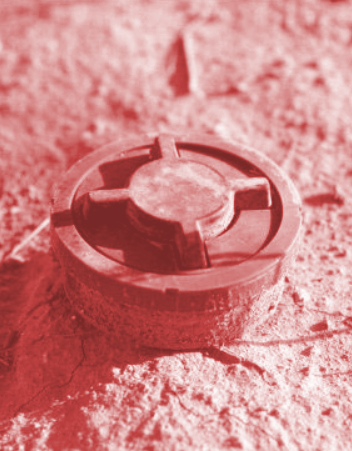Locals design anti-mine 'bot
 Australian scientists are designing robots to detect and deactivate landmines.
Australian scientists are designing robots to detect and deactivate landmines.
There have been 122,000 landmine casualties since global tracking began in 1999, with 25 per cent occurring between 2015 to 2018, and a substantial percentage of those being children.
‘De-mining’ is currently a painstakingly difficult task, with the detection, cost, and human risk presenting significant challenges to creating safe and secure landmine-free communities.
Dr Paul Cronin of Australian research and development start-up Molten-Labs says robotics are uniquely equipped to handle dangerous tasks such as these.
“Autonomous robots should be used where the environment is dull, dirty, or dangerous for humans. Humanitarian demining meets all three criteria,” he says.
“The aim of this project is to develop an autonomous demining robot, or more accurately, a swarm of autonomous demining robots that work together to quickly, safely, and inexpensively remove explosive mines in humanitarian crisis zones.”
His company is working with CSIRO offshoot Data61’s Robotics and Autonomous Systems Group team to develop an independent vehicle that can detect, deactivate and dispose of landmines.
The vehicle, which is roughly the size and build of a golf cart, is automated using state-of-the-art smart sensing, mapping and inspection technology, a combination that enables the system to motion plan, detect and avoid obstacles while being situationally aware.
“These demining robots will be able to enter the minefield immediately, without the need to train local operators,” says Dr Cronin.
“By using a swarm of these machines that are supported by a small core team of highly qualified personnel, clearance work can begin almost immediately upon arrival.”
Unlike human deminers, this autonomous system can operate continuously and regardless of the weather, speeding up the process.
Traditionally, de-miners have used manual methods to clear fields, often using a metal detector, stick or brush to expose the buried landmine, remove it physically by hand, and detach the firing mechanism to disarm it.
Hundreds of de-miners are killed or injured per year due to accidental detonation during clearance.
“Our system is inherently safer than current demining, as the robotic vehicles do not require deminers to be in the minefield,” explains Dr Cronin.
“Instead, the technical support team will be 100 metres away from the nearest operating robot.”
“If there is a problem with a robot during operations, it can ‘mate’ with another robot and be removed to the safe area for recovery and repair. This is one of the many advantages of using a swarm of inexpensive robots, rather than a singular, large, expensive mechanical machine.”
Dr Cronin, this methodology will operate at least ten times faster than a human deminer and four times longer per day, resulting in a 40-fold improvement in productivity.
The project is currently in its initial stages, with the team refining the navigation and ground marking elements before moving onto developing the magnetic sensor system needed to detect the mines in the field.
According to team member and Data61 researcher Dr Paulo Borges, an articulated robotic arm that will sit at the front of the vehicle will be equipped with a variety of tools it can swap in and out, including a powerful oxy-acetylene torch.
The torch can burn through the ground to incinerate the landmine, a technique known as deflagration. By avoiding explosion, damage to the surrounding landscape is significantly limited.
The torch will then be switched out for a small scoop that will remove all debris.
“The key benefits of this project are to remove the fear that a misstep can cost local populations their lives,” explains Dr Borges.
“The application of autonomous and artificially intelligent technology to this challenge can not only ensure the increased safety of areas and communities affected by landmines, but also speed up the laborious process of detection and save the lives of those people who search and clear the fields.”
The team and Molten Labs hope to have the mechanism deployed in real landmine fields in around two years.







 Print
Print